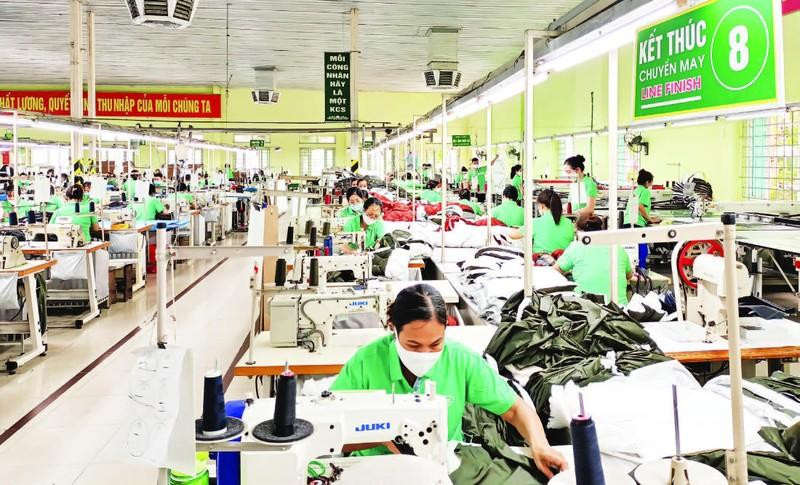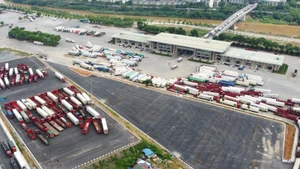In the past 10 months, the total export revenue of the textile and garment industry reached about 38 billion USD, an average of 3.8 billion USD per month. With inflation and high inventories, the main export market of Vietnam's textile and garment products is saturated, and businesses are trying to prevent a deep decline, trying to keep a revenue of more than 6 billion USD in the last two months of the year.
According to the General Director of Vietnam National Textile and Garment Group (Vinatex) Cao Huu Hieu, the textile and garment industry has been facing both opportunities and challenges during the past ten months. Market instability due to the COVID-19 epidemic and the Russia-Ukraine conflict almost did not affect Vinatex’s production and business activities in the first six months of the year, production and business results were very favourable for businesses. Revenue and profit exceeded the whole year plan.
However, right from the beginning of the third quarter, the number of orders and prices tended to decrease sharply, causing textile enterprises to face many challenges in production activities. Due to the accurate assessment of the situation and the forecast of the market's signals, the Group's leaders have oriented and noticed the bad situation in production units early, to take countermeasures.
Thereby, the Group's consolidated revenue in 9 months still reached 14 trillion VND, equalling 79% of the plan, and the consolidated profit before tax reached 1.15 trillion VND, 24% higher than the plan. However, in the fourth quarter, due to high inflation and large inventories in key export markets, the production and business activities of enterprises at the end of the year were severely affected.
Vice President and General Secretary of the Vietnam Textile and Apparel Association (VITAS) Truong Van Cam, said that the total export revenue of Vietnam’s textiles and garments in the 10 months of 2022, still reached about 38 billion USD.
However, from September and October, export volume decreased compared to previous months, due to difficulties in orders, and high inventory; in particular, in the US and EU, the main export markets of Vietnam's textile and garment, the unit price decreased by about 30%, the supply progress of raw materials was slow due to China's implementation of the Zero-Covid policy, causing a logistics chain crisis, labour fluctuations, etc.
Although businesses in the industry find all solutions to boost production and keep exports, due to the Russia-Ukraine conflict, which has a strong impact on energy prices, the market is located near and in the war zone, which cannot receive exported goods. There is also another paradoxical problem from the beginning of the year to July, customers ordered a very large amount of goods but fell at the right time, when developed countries did not achieve the desired economic growth, high inflation made people tighten spending and reduced consumer demand.
According to experts, the textile and garment market is forecasted to be quiet until the end of the fourth quarter of 2022 and lasts until 2023. Besides, the financial-monetary market also has a negative influence on the operation, production and business of enterprises.
Although the USD/VND exchange rate continued to increase by about 15 points, to around 23,715 VND/USD, depreciating 3.8% against the USD, this is the lowest level among textile exporting countries, which means Vietnamese textile and garment exporters are losing their competitive advantage in price.
To fulfil the set export targets, textile and garment enterprises must flexibly deploy solutions to maintain their workforce and ensure the best conditions, to deploy production in all situations.
Experts also recommended that textile and garment enterprises quickly improve their management systems, to meet the needs of quick and immediate administration; maintaining and stabilising product quality; flexible production layout, making the most of orders, including short-term orders; at the same time, balance inventory and consumption to ensure cash flow, as well as prepare resources, to be able to organise production proactively as soon as the market shows signs of improvement.
According to experts, the textile and garment market is forecasted to be quiet until the end of the fourth quarter of 2022 and lasts until 2023. Besides, the financial-monetary market also has a negative influence on the operation, production and business of enterprises.
















